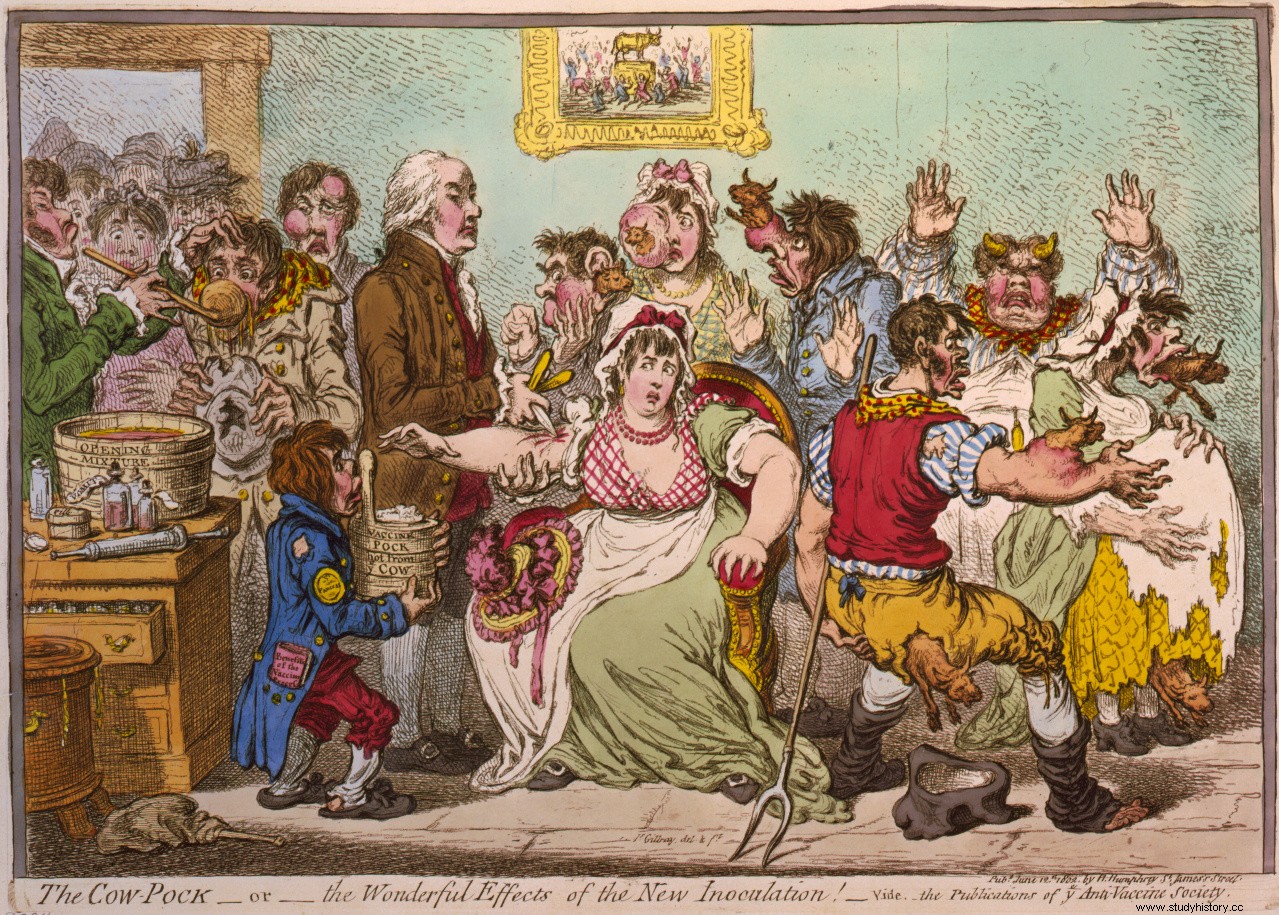Today, with the use of portable refrigerators and isothermal boxes, it is easy to maintain the cold chain and transport vaccines, but two centuries ago...
To the English doctor Edward Jenner We owe him the discovery of the smallpox vaccine and, by extension, vaccines. He found that people who had been in contact with cows and who had suffered from cowpox – in humans it only produces pustular lesions – showed resistance to smallpox. So, at his own risk, since for the scientific community that was an aberration, he extracted pus from a pustule on the hand of Sarah Nelmes , a milkmaid who had contracted smallpox from her cow's udders, and inoculated an 8-year-old boy, James Phipps with the virus. (who had not suffered from the condition). The child developed a mild disease that disappeared without the slightest complication... in 1796 the first vaccine had been successfully tested . It still took several years, and much criticism, for the vaccination method to be established as a preventive measure against smallpox.

The Spanish king, Carlos IV, decided to organize, and finance, the Royal Philanthropic Expedition (also known as Balmis Expedition in reference to the Spanish doctor Francisco Javier Balmis ) that would bring the smallpox vaccine to the American continent. But there was a problem… how to take the vaccine on a 2-month trip? The only form of transport was inoculated into the individual itself .
These «original containers » must have been children, since adults could have been immunized and not develop the pustules necessary to extract the virus. So, "volunteers" were sought among abandoned children and taken in hospices that, let's remember, were at the service of the State (they were guinea pigs). It was calculated that 20 children would be enough to cross the pond. The expedition left on November 30, 1803.
The first child is inoculated with the virus and since he is not immune to smallpox, he develops the disease, and the consequent pustules, before it heals, the virus is extracted again and another child is inoculated and so on, successively, until reaching the new child. World...
And thanks to the vacuniferous children , as they were called, the vaccine arrived in the Americas.
Sources:Wikipedia, Complutense Scientific Journals
